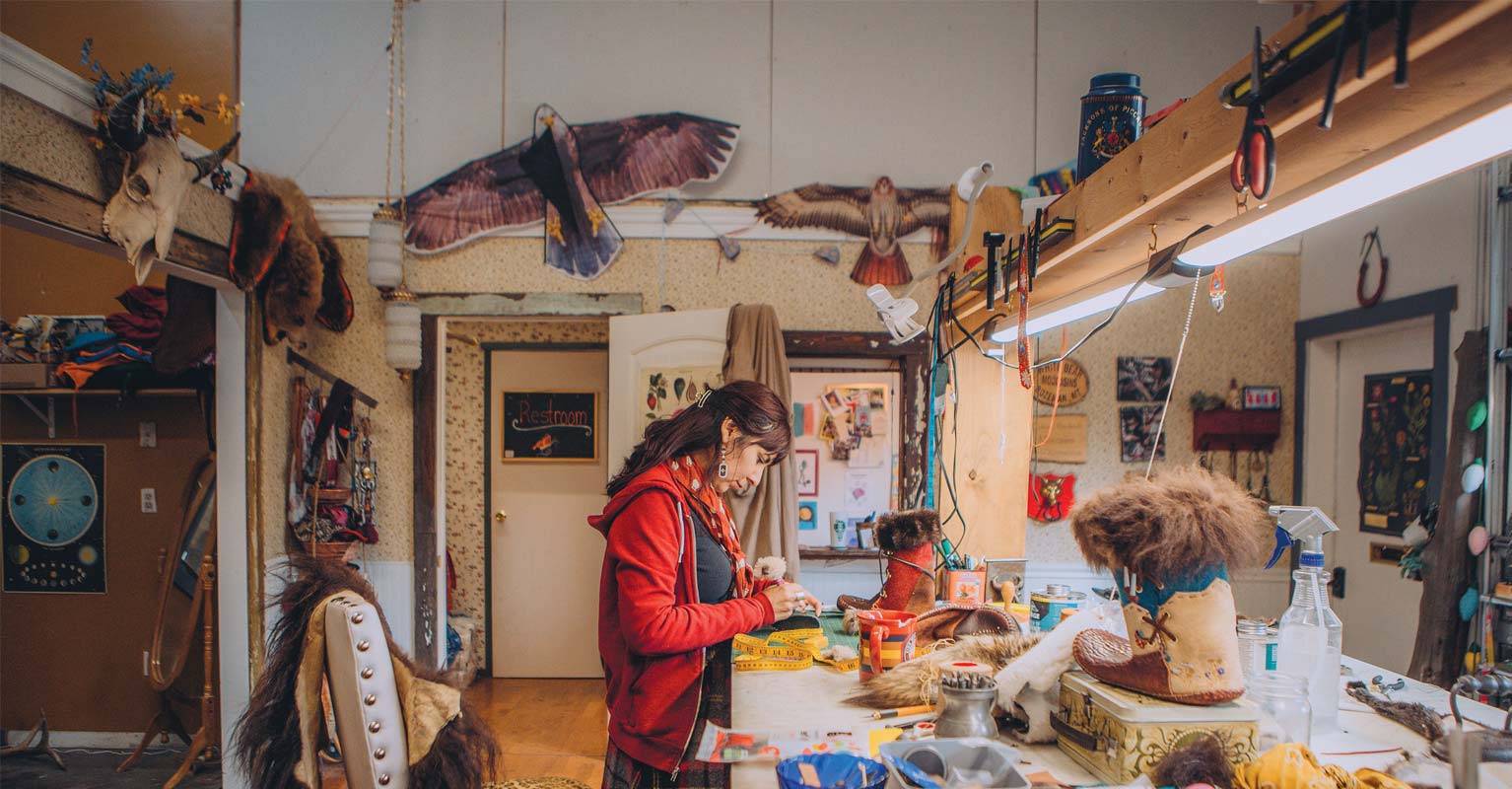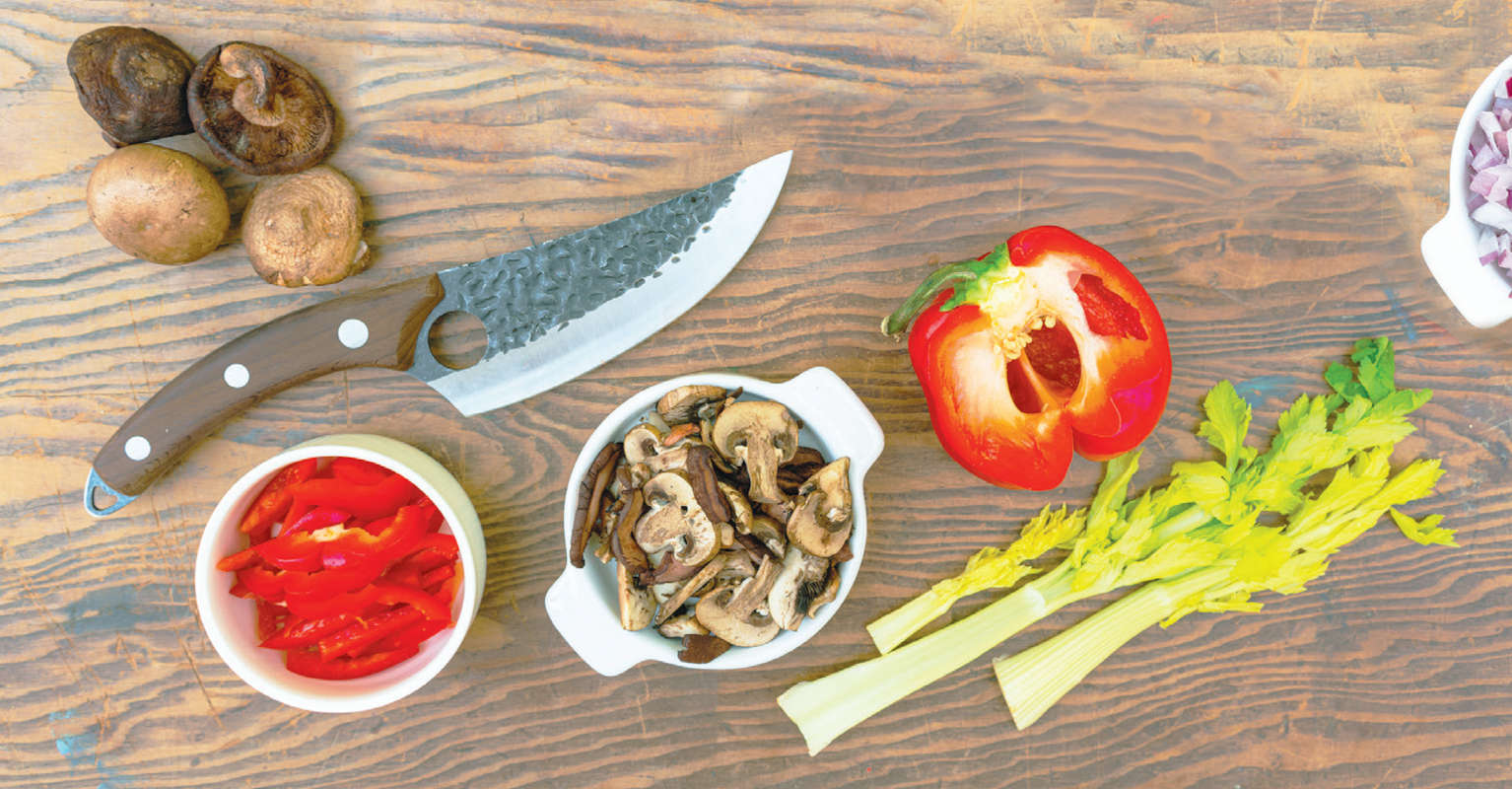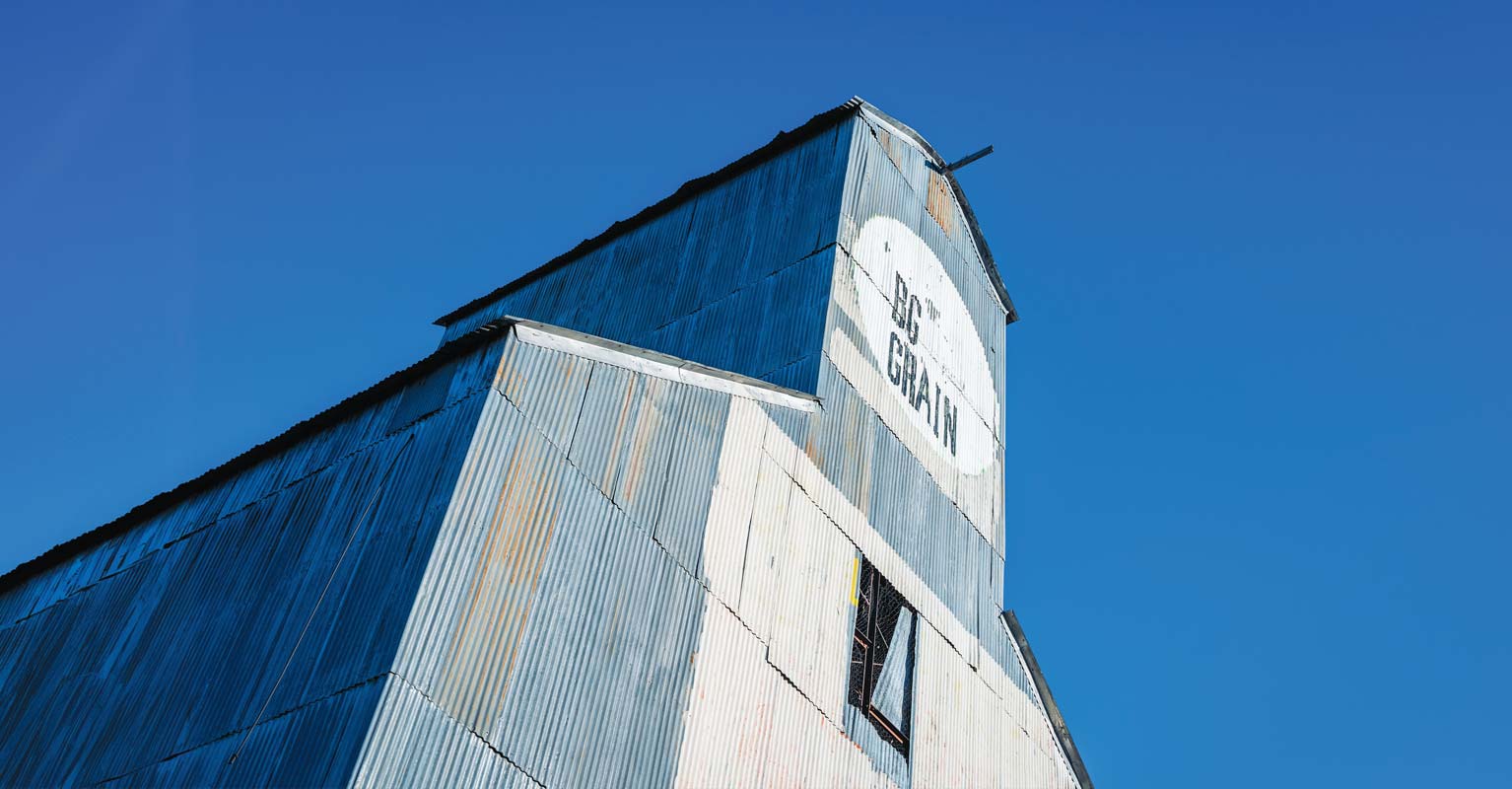How the Montana Fibershed Weaves Tradition with Innovation
People have long been called to the regenerative cycles of nature through creativity. This heritage of artistry is alive and well in Montana agriculture, where many raise animals not just for food but for fiber: a unique industry that allows us to express our connection to land and community creatively.
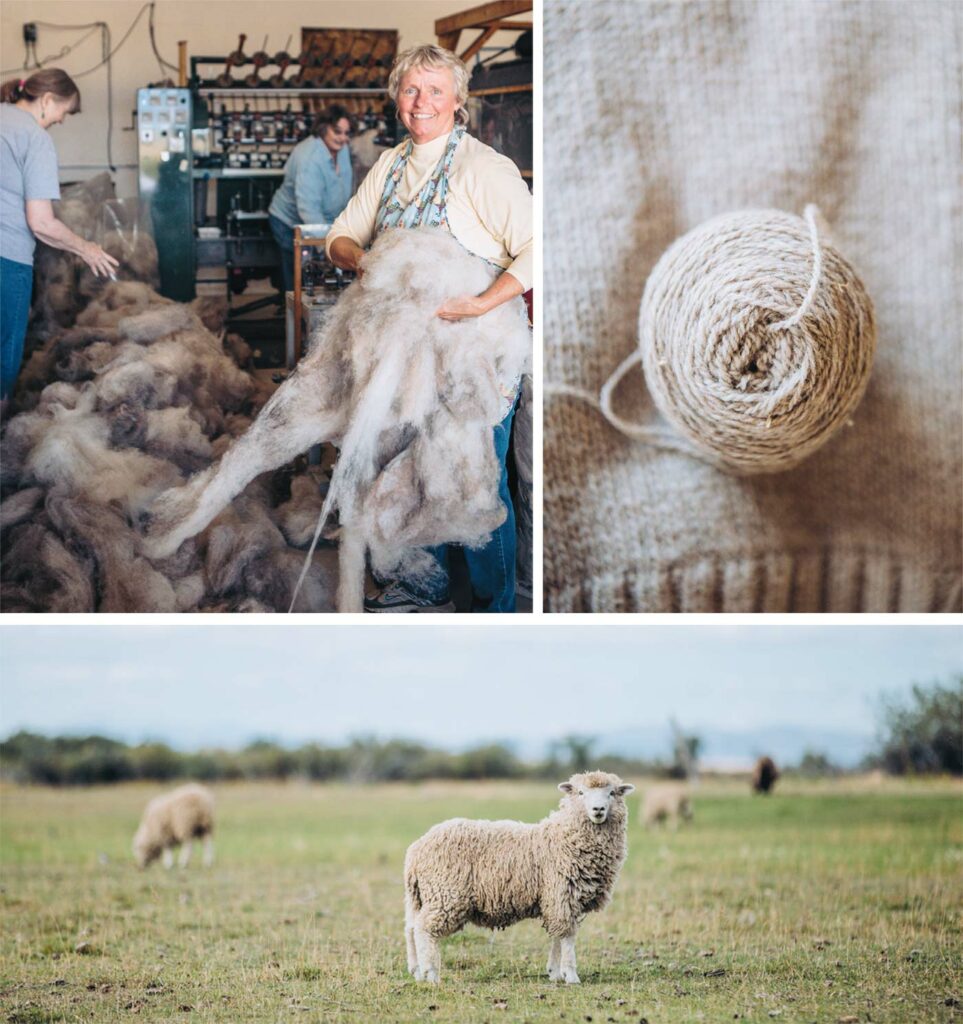
LaVonne Stucky: The Wool Mill
LaVonne Stucky is no stranger to networking. Building relationships is what she does, so it comes as no surprise that in 2018 she signed up as a Montana affiliate of the national organization Fibershed. “People have called me the spider in the web,” she says, her contagious laugh filling the air.
Owner of the Belgrade fiber-processing operation The Wool Mill, Stucky took on formalizing this chapter of the national organization with the same vigor and grit she summons for all of her endeavors. Two years after becoming an affiliate, Stucky collaborated with a core group of women to officially launch the Montana Fibershed, a nonprofit organization that consists of a central network of fiber growers, manufactures, and users. The group increases visibility within the industry, something that has been lacking in the state. The network shares the values of the national organization, and strives to promote a climate benefiting agriculture, to rebuild regional manufacturing, and to connect end users to the source of their fiber. In Montana, however, the special ingredient is in the way producers blend tradition with innovation.
Regenerative agriculture is not a new concept to The Wool Mill. Stucky has spent over 30 years tending a small flock of sheep, and in 2018 she took her work to the next level by creating a zero-waste wool-processing operation. She relies on solar energy to heat water for washing the wool and operating the machinery, and uses eco-friendly soaps to wash fibers so that wastewater can be spread over her pastures. Stucky’s workshop is surrounded by her farmland. The contrast between the looming antiquated machinery and sweeping pastoral view out of her large shop doors demonstrates the striking balance she plays between tradition and innovation.
To Stucky, the future of the fiber industry lies not only in the care with which we grow and use fiber, but how we create inclusion for all fiber producers, large and small, to gain the visibility, connections, and resources they need to thrive. It’s about relationships, honoring tradition, and thinking creatively. Perspectives on product value are changing and folks are looking for new ways to meet textile needs that bring us back to our roots.
“We’ve gotten away from too many basic elements,” Stucky says. “The natural fiber industry brings us back to those.
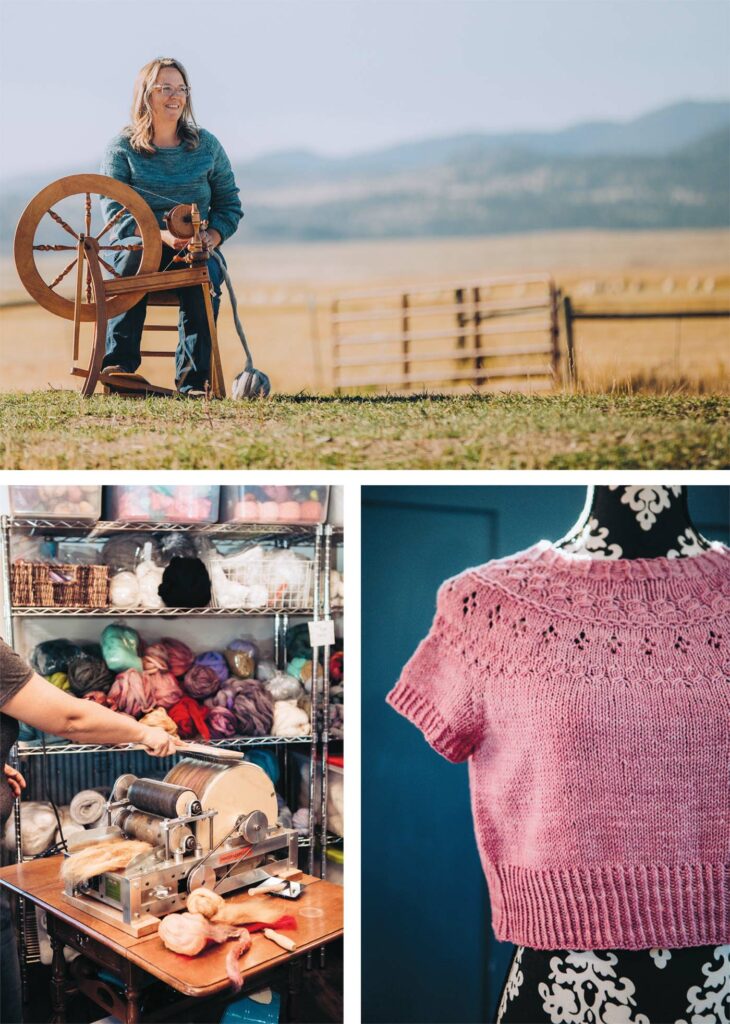
Kami Noyes: Ranching Tradition Fiber
Roots run deep for fifth-generation cattle and sheep rancher Kami Noyes of Ranching Tradition Fiber in Whitehall. Her great-great-grandfather was one of the first to bring sheep to Montana from California and to ship cattle and sheep to Chicago after the railroads were established. Fast forward several generations, and Noyes continues her family’s legacy of agriculture today with her flock of about 150 Targhee Rambouillet sheep.
While Noyes’s love of agriculture came from her father’s side of the family, the tradition of fiber artistry came from her mother’s. Her maternal grandfather was a weaver and her grandmother knitted, crocheted, and sewed. Noyes carries that creative heritage forward as she grows wool, processes it locally at the Montana Wool Barn in Cardwell, then spins and dyes the wool to sell out of her studio, online, and at local retail stores such as Stix in Bozeman. Sheep have always called to Noyes, as has preserving the legacy of her family’s ranching tradition and fiber-arts heritage.
Words like sustainability, though, can become overused buzzwords for those who have spent their lives on the land. Noyes’s family, for instance, doesn’t need to be told the importance of soil health and good land stewardship. Her father always said, “We’re in the business of growing grass,” not livestock. Allowing sheep and cattle to graze together is just one example of a creative approach to weed management without chemicals as well as a way to improve feeding efficiency as sheep will clean up hay that cows leave behind. For Noyes, sustaining her legacy with fruitful livelihoods for her family rests on generations of experience, diversity, and creativity.
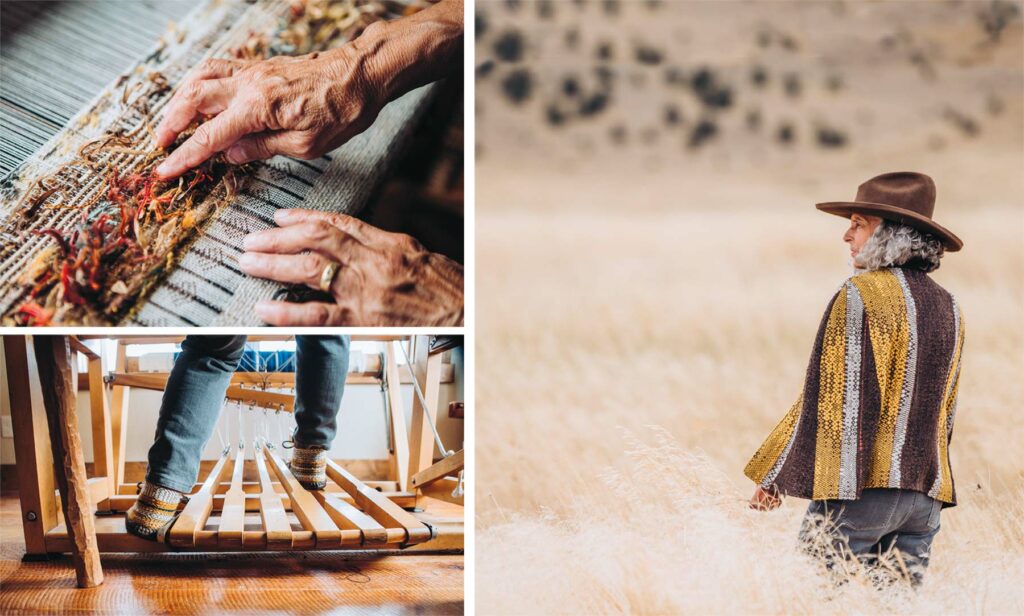
Helen Harris: Traveling Thread
Lifelong fiber artist Helen Harris beautifully weaves together agriculture and artistry. Harris grew up learning to mend and stitch at her grandmother’s knee, turning a weekly task into a master’s degree when she graduated with a Master of Arts degree in Textile Design and Studio Art from Northern Illinois University. If she isn’t wandering the foothills of her Ennis home looking for colors, patterns, and textures in nature to inspire her elaborate weavings, she’s creatively mending jeans and recycling fibers. Harris sees an opportunity to support regenerative agriculture through her artistry and fashions, and sourcing regional fibers is one way.
Harris believes we can bring the seemingly pastoral concept of small-scale fiber production into this generation of consumers by integrating quality natural fibers with contemporary fashions. She sits on the board of the Montana Fibershed and took part in the organization’s debut event, the Farm to Fashion Show that took place in October 2022 at the Emerson Center for the Arts and Culture in Bozeman. Funded by a grant from the national Fibershed organization, the Farm to Fashion Show was Montana’s premiere educational fiber event, showcasing all that farmers and artists in the state are creating together, as well as cultivating discussions on soil health, economics, and emerging fiber markets.
According to Harris, sustainability is linked to the concept of “slow fashion,” or the conscious production, distribution, and mindful use of clothing. Slow fashion goes beyond how we create and market garments, to include the full life cycle of these textiles. One stop along the way is mending, which is an impactful way of keeping fibers in use and out of landfills. In many cases, mending is a forgotten art form, though it is making a comeback in the way of mending bars, or gatherings where people mend together in community, sharing techniques, ideas, and time. Harris hopes to begin hosting her own mending bar soon.
The fiber industry in Montana is on a new horizon. Montana producers are looking to the past, not with nostalgia but to find what worked and how to build upon it. Agriculture and artistry have been a part of the state’s heritage for generations, and working in nature creatively and in community might be what keeps people coming back to it. When an industry builds upon its legacy with inclusion, creativity, and care for how and what is made for future generations, an elaborate weaving called quality of life is spun.
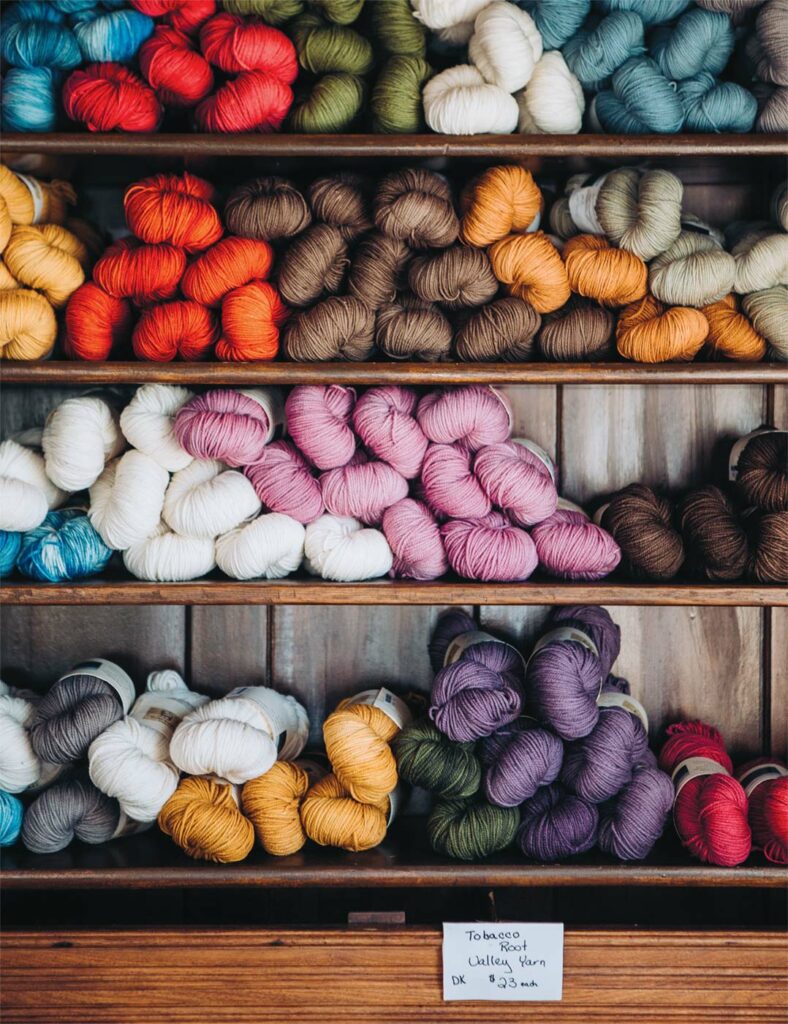
How can you participate in the Montana Fibershed?
Check out the Montana Fibershed website for upcoming events, such fiber festivals, mending bars, or talks. Throughout the winter season, consider visiting the website to find sources for local yarns and shops, supplies, one-of-a-kind gifts, and creations. Interested in participating in or hosting a mending bar? Contact Helen Harris at hhtravelingthread@gmail.com.
Are you a fiber grower or user? Contact the Montana Fibershed to become a member, get access to education and resources, and to list your business.
- Visit montanafibershed.org to learn more.


